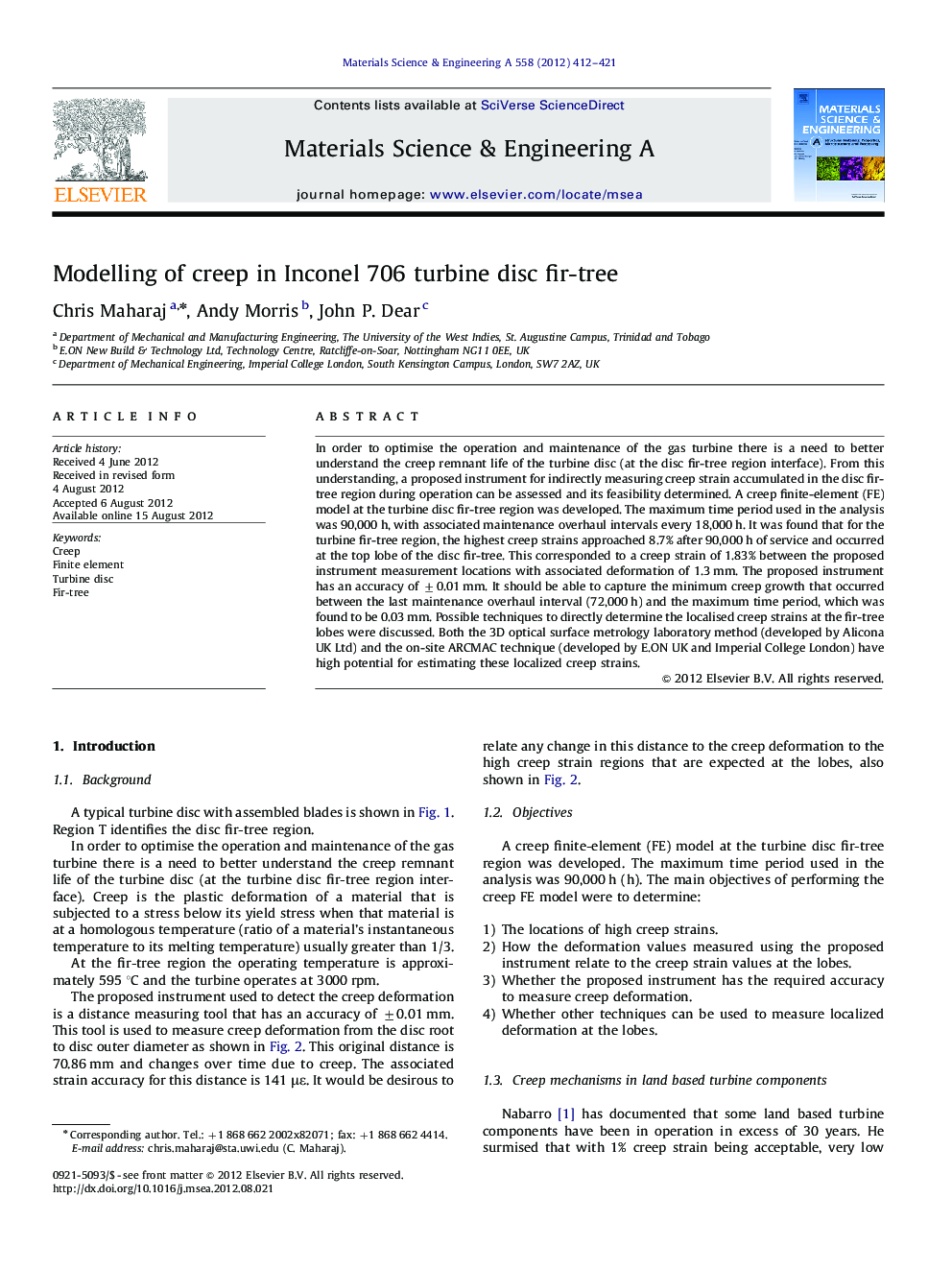| Article ID | Journal | Published Year | Pages | File Type |
|---|---|---|---|---|
| 1576783 | Materials Science and Engineering: A | 2012 | 10 Pages |
Abstract
In order to optimise the operation and maintenance of the gas turbine there is a need to better understand the creep remnant life of the turbine disc (at the disc fir-tree region interface). From this understanding, a proposed instrument for indirectly measuring creep strain accumulated in the disc fir-tree region during operation can be assessed and its feasibility determined. A creep finite-element (FE) model at the turbine disc fir-tree region was developed. The maximum time period used in the analysis was 90,000 h, with associated maintenance overhaul intervals every 18,000 h. It was found that for the turbine fir-tree region, the highest creep strains approached 8.7% after 90,000 h of service and occurred at the top lobe of the disc fir-tree. This corresponded to a creep strain of 1.83% between the proposed instrument measurement locations with associated deformation of 1.3 mm. The proposed instrument has an accuracy of ±0.01 mm. It should be able to capture the minimum creep growth that occurred between the last maintenance overhaul interval (72,000 h) and the maximum time period, which was found to be 0.03 mm. Possible techniques to directly determine the localised creep strains at the fir-tree lobes were discussed. Both the 3D optical surface metrology laboratory method (developed by Alicona UK Ltd) and the on-site ARCMAC technique (developed by E.ON UK and Imperial College London) have high potential for estimating these localized creep strains.
Keywords
Related Topics
Physical Sciences and Engineering
Materials Science
Materials Science (General)
Authors
Chris Maharaj, Andy Morris, John P. Dear,
